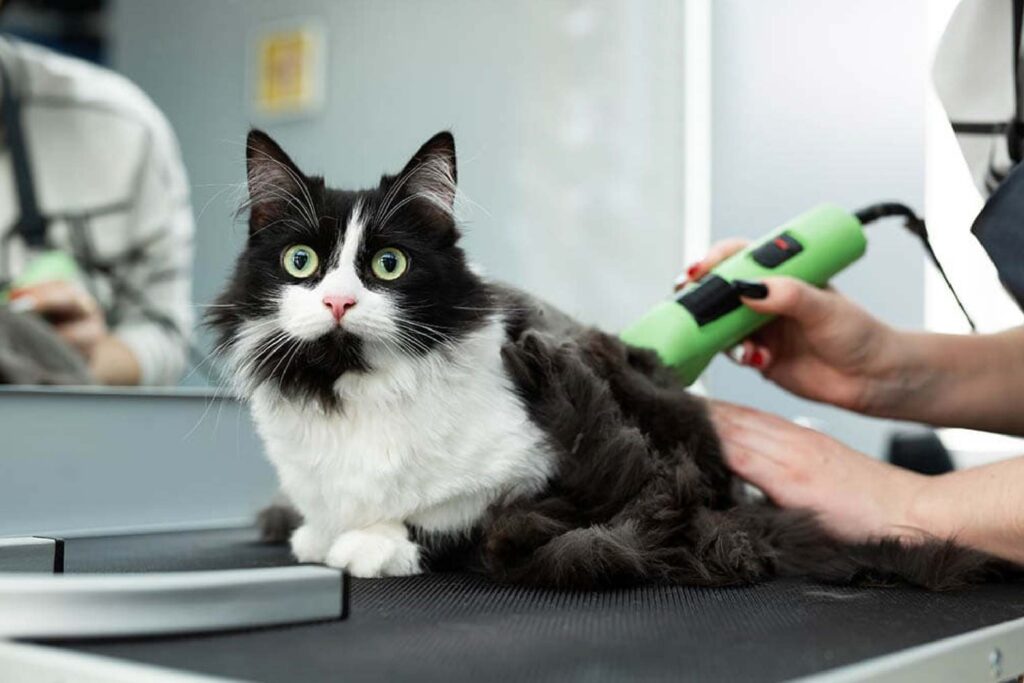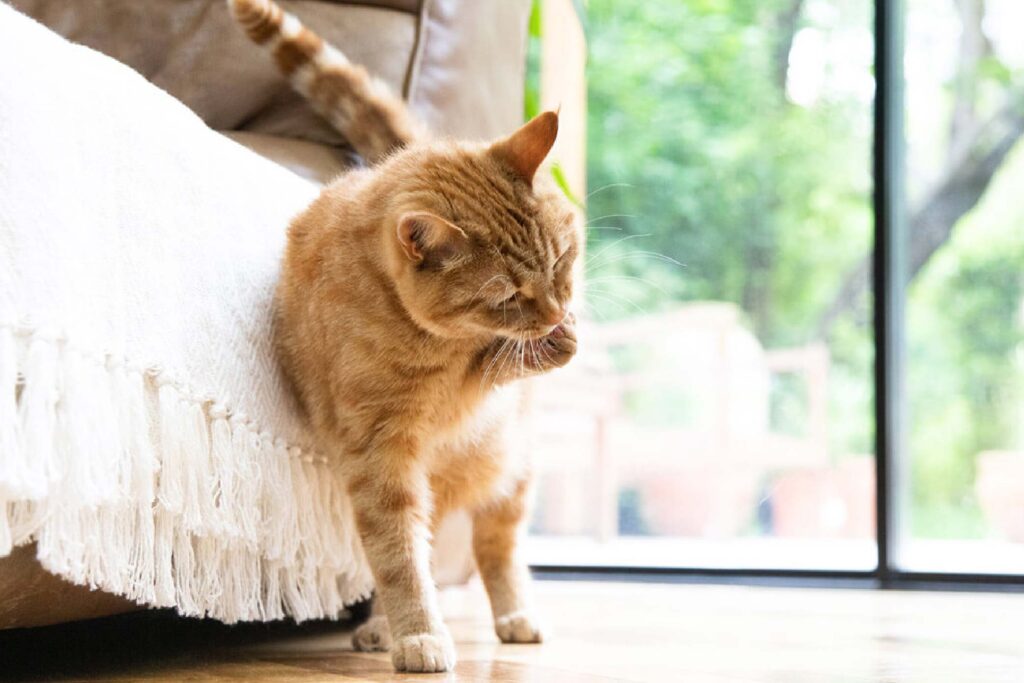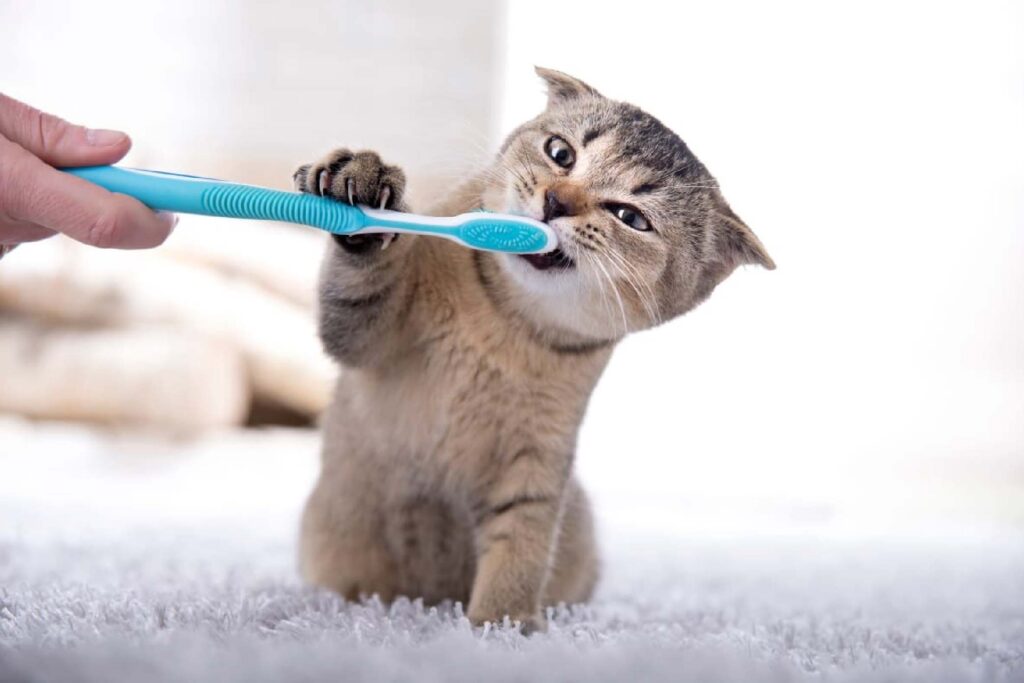Their beautiful movements and independent personalities spark our fascination with cats. Our responsibility as responsible cat owners is to ensure they are content and healthy. Even though cats are renowned for their exceptional cat grooming abilities, they nonetheless significantly benefit from human aid in preserving their well-being and attractiveness. In this essay, we will examine the many benefits of routine cat grooming and how it strengthens the link between you and your cherished feline friend.
Benefits of Regular Cat Grooming
1. Physical Health
Grooming is not just about keeping your cat’s fur clean and untangled; it plays a significant role in their physical health. By cat grooming your cat regularly, you can help prevent hairballs. This common issue arises from excessive fur ingestion during self-grooming. Hairballs can be uncomfortable for your cat and, in severe cases, lead to gastrointestinal blockages. Regular cat grooming also allows you to inspect your cat’s skin for any signs of irritation, dryness, or parasites. Early detection of skin issues can prevent more significant problems from developing, ensuring your cat’s overall well-being.
2. Mental Well-being
The act of grooming is a physical ritual and a soothing experience for cats. Regular grooming sessions have a calming effect on your feline friend, reducing stress and anxiety. It also provides an excellent opportunity for bonding between you and your cat. As you gently groom your pet, you reinforce their trust and affection for you, further solidifying your emotional connection.
3. Grooming and Social Behavior
Grooming is a social behavior among cats, especially in groups. When you groom your cat, you engage in a social interaction that mimics what they experience in their natural environment. By grooming your cat, you reinforce positive behavior and strengthen your bond with them. For kittens, early cat grooming experiences help shape their understanding of grooming as a positive and enjoyable activity, setting the foundation for a lifetime of stress-free grooming.
4. Aesthetic Appeal
Regular grooming helps your cat maintain a beautiful and healthy coat. Brushing removes loose fur and prevents excessive shedding, which means less cat hair on your furniture and clothes. Moreover, grooming helps prevent matting, especially in long-haired cats. Matting can be painful for your cat and lead to skin issues if left unaddressed. A well-groomed cat looks better and feels more comfortable and confident.
Establishing a Grooming Routine

1. Gathering the Right Tools
Before you start a cat grooming routine, gather the necessary tools. Invest in high-quality brushes and combs suitable for your cat’s coat type. Additionally, choose cat-friendly shampoos and conditioners for bathing, if necessary.
2. Starting Early: Introducing Kittens to Grooming
If you have a kitten, begin introducing grooming at an early age. Make grooming sessions fun and positive experiences for them. Use treats and gentle strokes to accustom them to being groomed. Once the sessions grow more comfortable, gradually lengthen them.
3. Understanding Your Cat’s Coat Type
Cats have different coat types, each requiring specific grooming techniques. Short-haired cats usually need less frequent brushing, while long-haired cats may require daily grooming to prevent matting and tangling.
4. The Grooming Process
The grooming process involves various tasks, such as brushing, nail trimming, and ear cleaning. Brushing removes loose fur and stimulates blood flow to the skin, promoting a healthy coat. Nail trimming is essential to prevent overgrown claws that can cause discomfort and potential injury. Also, cleaning your cat’s ears helps prevent ear infections and ensures that their ears are healthy.
Addressing Specific Grooming Challenges

1. Dealing with Shedding
Shedding is a natural process for cats, but regular grooming can significantly reduce the amount of loose fur in your home. Use de-shedding tools to remove loose fur and follow a balanced diet to support healthy skin and coat.
2. Handling Hairballs
Hairballs can be a nuisance and, in some cases, a health concern. To minimize hairballs, groom your cat regularly to reduce the amount of fur they ingest during self-grooming. Provide hairball prevention treats or supplements if necessary.
3. Tackling Matting and Tangles
Long-haired cats are more susceptible to matting and tangles. Gently untangle knots using appropriate tools and techniques. Consider seeking professional grooming assistance if the matting is severe or difficult to handle.
Health Monitoring During Grooming Sessions

1. Spotting Skin and Coat Issues
While grooming your cat, pay close attention to its skin and coat. Look for any dryness, redness, sores, or bald patches. These could indicate skin problems, allergies, or other health issues. Consult your veterinarian for a more thorough assessment if you observe anything unusual.
2. Checking for Parasites
Grooming sessions allow checking for external parasites such as fleas, ticks, and mites. Early detection of these pests allows for prompt treatment, preventing infestations from spreading.
3. Oral Health Inspection
Dental health is crucial for cats. During cat grooming, take a moment to inspect your cat’s teeth and gums. Dental problems can cause pain and discomfort, leading to eating difficulties and potential systemic health issues.
Grooming Tips for Senior Cats
1. Adjusting Grooming Routines
As cats age, they may require adjustments to their grooming routine. Accommodate any mobility issues or stiffness, and handle your senior cat with extra care and patience during grooming sessions.
2. Addressing Age-Related Grooming Challenges
Senior cats may experience changes in their coat’s texture, becoming dry and brittle. Provide additional cat grooming care to keep their coat in good condition. Consult your veterinarian for advice if you detect any noticeable changes.
The Emotional Aspect of Grooming

Building Trust and Bonding
Grooming is not just about physical care but also an opportunity to strengthen the emotional bond with your cat. Approach grooming with patience and kindness, allowing your cat to feel safe and loved. This positive experience will enhance your relationship and build trust over time.
Recognizing Stress and Anxiety
Cats sometimes feel stressed or anxious during cat grooming, mainly if they are not accustomed to the process. Watch for signs of discomfort, such as flattened ears, vocalizations, or attempts to escape. If your cat becomes stressed during grooming, take breaks and use soothing techniques like gentle strokes or offering treats.
Seeking Professional Grooming Services
Choosing a Professional Groomer
If you struggle with cat grooming or your cat needs specialized care, consider hiring a professional groomer. To select a dependable groomer, check reviews, get referrals from other pet owners or your veterinarian, and ask around.
Frequency of Professional Grooming
The particular demands of your cat will determine how often it receives expert grooming. Long-haired breeds may require professional grooming every 4 to 6 weeks to keep their coat in good condition. However, if you routinely brush your cat at home, professional grooming may be less frequent for short-haired cats.
Conclusion
A vital component of good pet ownership is routine cat grooming. Beyond just being aesthetically pleasing, grooming significantly impacts your cat’s physical health, mental health, and emotional connection to you. Regular grooming not only keeps your cat looking its best, but it also helps to ensure that they have a happy and fulfilled life. Your time and effort cat grooming your feline buddy will be rewarded with a more robust, longer-lasting bond.